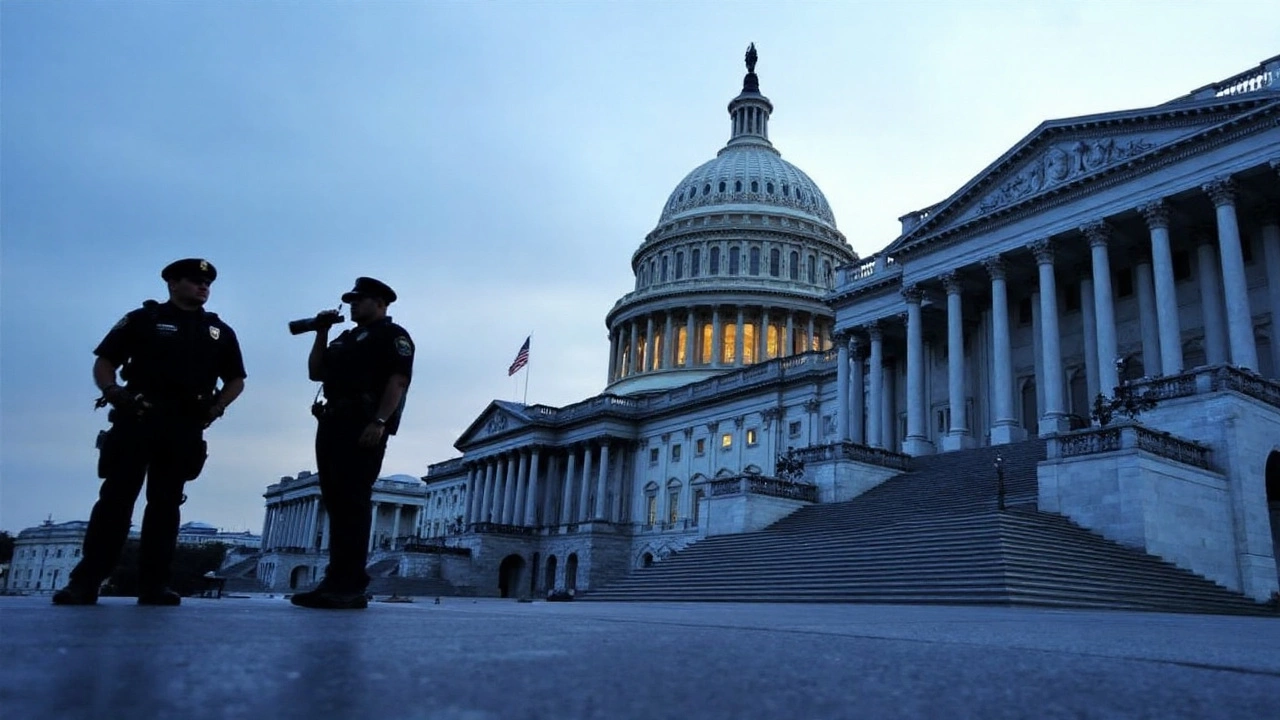Why the Labor Department Is Probing BLS Methods
A nearly million-job swing will get anyone’s attention. This week, the Bureau of Labor Statistics said its preliminary annual benchmark cut total nonfarm payrolls for March 2025 by 911,000 jobs, a 0.6% downward adjustment. That’s about three times the size of a typical annual change. Within hours, the Labor Department’s inspector general launched an investigation into how the agency collects the data that feed the country’s most-watched economic indicators.
The watchdog’s review follows months of political heat. Former President Donald Trump fired the BLS commissioner and accused the agency of rigging numbers after a string of negative revisions. Career statisticians at BLS have long said the process is technical, not political, and the new review will put that claim under a microscope. The inspector general plans to look at the practical hurdles the agency faces when it counts jobs and prices—things like late filings by employers, falling survey response rates, and how new businesses are captured.
So what exactly changed? Each year, BLS aligns its monthly payroll survey—known as the Current Employment Statistics (CES) survey—with a more complete count from the Quarterly Census of Employment and Wages (QCEW). The QCEW is built from state unemployment insurance tax records that most employers must file. It’s not fast, but it’s thorough. When those administrative records come in, they become the scorecard that tells BLS how accurate its earlier estimates were. This time, that scorecard says the economy had fewer jobs than first thought.
In the last decade, annual benchmark revisions have averaged about 0.2% of total nonfarm employment in absolute terms. The current 0.6% change is a big outlier. It doesn’t mean monthly reports were useless; it means the initial picture was off by more than usual and needs a reset. The final benchmark will be published in February 2026 with the January 2026 Employment Situation report. Until then, the preliminary gap is a key signal for businesses, markets, and the Federal Reserve.
Why do these gaps happen? The monthly payroll survey reaches around hundreds of thousands of worksites, but it is still a sample. BLS uses models to account for new firms and closures—the so-called birth-death model—because you can’t wait for every paperwork trail to settle before telling the public what happened in the job market. When the economy shifts fast, those models can struggle. If more small firms shut down than expected, or if new business formation slows, the early estimates can run too hot. The later QCEW check is when reality catches up.
The revision does not touch every metric the same way. Payroll jobs come from the establishment survey. The unemployment rate comes from a separate household survey, run by the Census Bureau for BLS, and won’t be re-benchmarked in the same manner. That’s why you sometimes see jobs and unemployment appear to tell slightly different stories. Both are valuable, but they’re measuring different things.
Inflation data will also be in the spotlight. BLS produces the Consumer Price Index and the Producer Price Index. Those numbers rely on price samples from stores and service providers, rent surveys, and quality adjustments for new products. Response rates have slipped over time across many surveys, and measuring rents and medical services has grown harder as the economy changes. The inspector general is expected to examine whether data collection tools, vendor systems, and quality controls are keeping up with those challenges.
None of this means the data are broken. It means the cost of getting timely information is that we live with revisions. The question now is whether the systems and safeguards BLS uses are still right for the job—and where they need a tune-up. The investigation is designed to answer that. It will also test whether the public can trust the numbers at a time when politicians are quick to question them.
The stakes are high. Markets move on first prints. The Federal Reserve weighs jobs and inflation in its interest-rate decisions. Governors and mayors plan budgets off revenue forecasts that depend on employment trends. If the baseline shifts by hundreds of thousands of jobs, the narrative on growth, wages, and spending can shift with it.

What the Review Could Change—and Who’s Watching
What will the inspector general look at? The office has a wide remit. It can dig into field operations, sampling methods, IT systems, and how the agency communicates uncertainty. It can recommend fixes and timelines, and it can push for more transparency around revisions so users aren’t blindsided by large changes.
- Data sources: Greater use of real-time administrative feeds from payroll processors and tax records, while protecting privacy.
- Sampling and nonresponse: Strategies to raise response rates and better correct for missing data.
- Birth-death modeling: Updates to detect business openings and closures faster during turning points.
- Quality control: Stronger checks before release and clearer revision schedules for users.
- Systems and security: Modernizing vendor tools and safeguarding data integrity.
Expect calls for BLS to publish more detail on confidence intervals and error bands right alongside headline figures. Users can handle uncertainty when it’s spelled out. Clearer dashboards showing how much of a monthly change comes from sample data vs. model estimates could also help. When a big revision hits later, people can see why.
There’s also a communications challenge. Most people see one number—jobs gained or lost—and move on. But the monthly report is built from many moving parts. Separating the “flash” estimate from the more stable administrative counts, and marking them clearly, could reduce the shock factor when benchmark season arrives each year.
Lawmakers are watching. House and Senate committees that oversee the Labor Department could call hearings once the inspector general releases findings. The White House will keep an eye on the messaging risk. And the Fed will sift through the technical details to assess whether its reading of labor market slack needs a tweak. If payroll growth was overstated in 2025, that’s relevant to rate policy and inflation outlooks.
What about the private sector? Employers rely on industry-level figures to plan hiring and wages. A large downward revision can prompt firms to reassess expansion plans, bonus pools, or shift scheduling if demand looks softer than they thought. Workers might see slower wage growth in sectors where the benchmark shows fewer jobs than previously reported. Unions and employers that use CPI for cost-of-living adjustments will watch any changes in how BLS measures rent and services, given their impact on inflation readings.
The politics won’t fade either. Accusations of “rigging” are easy to make and hard to disprove in real time. That’s partly why this investigation matters: it gives an independent office the chance to walk through the nuts and bolts. Historically, big revisions have clustered around economic turning points—recessions and rapid recoveries—when business churn is intense and models are most strained. That doesn’t excuse errors, but it explains why they happen.
Here’s the near-term timeline. The inspector general has opened the case; such reviews typically run for months, not weeks. BLS will continue to publish monthly jobs and inflation reports on schedule, and will update users on any technical changes that affect those releases. The final benchmark revision will arrive with the January 2026 jobs report in February, locking in the new level for payrolls.
For readers who track every release, keep two things in mind. First, the headline number is an estimate, and the band of uncertainty widens when the economy shifts fast. Second, benchmark season is when initial stories are rewritten in light of better data. Neither is a sign of foul play. They’re the trade-offs of getting information quickly instead of waiting a year for near-perfect counts.
And what about inflation? The review could spur changes in how rents, medical care, and new goods are treated in the CPI. Tweaks to sampling frames and data collection modes—phone, web, and in-person—could lift response rates and reduce noise. If the inspector general urges more administrative data in price indexes, expect careful pilots rather than sudden overhauls, because price data have different quirks than payroll counts.
One last point on trust. Transparency builds it. BLS has the chance to show its work more plainly—what’s sample, what’s modeled, what’s revised—and to give users better tools to follow the changes. Highlighting the size and direction of past revisions by sector would help businesses understand where estimates are most volatile. Doing that won’t eliminate criticism, but it will anchor the debate in evidence.
For now, the headline is simple: a rare, large downward adjustment to jobs has triggered a formal probe into how the government measures the economy. The review won’t settle every argument, but it could make the numbers clearer and the process stronger. And it will remind everyone who relies on these figures—policymakers, markets, companies, and households—that even the best data come with built-in uncertainty.
Amid the scrutiny, one thing is certain: people will be parsing the next jobs report not just for the number, but for how that number was made. That’s a healthy shift. It puts the focus on the machinery behind the statistics, not just the headline they produce. The inspector general’s report will show where that machinery hums—and where it needs new parts. In the meantime, treat big moves in early estimates with caution, and keep an eye on those February 2026 revisions.
As the debate continues, remember what started it: the sharp scale of the latest BLS data revisions. That’s the spark for this inquiry, and it’s why the integrity of the process, not just the outcome, is front and center.

